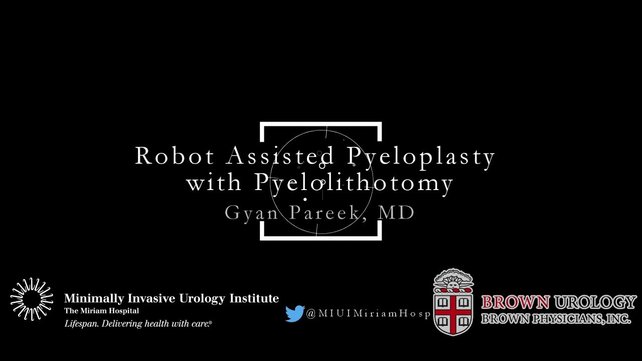Robot-Assisted Laparoscopic Partial Nephrectomy
This video documents a minimally invasive procedure performed by the co-director of the Minimally Invasive Urology Institute, Dragan J. Golijanin, MD.
Dr. Golijanin operates to remove two renal masses from the remaining kidney of a 50-year-old man who previously had donated his other kidney.




